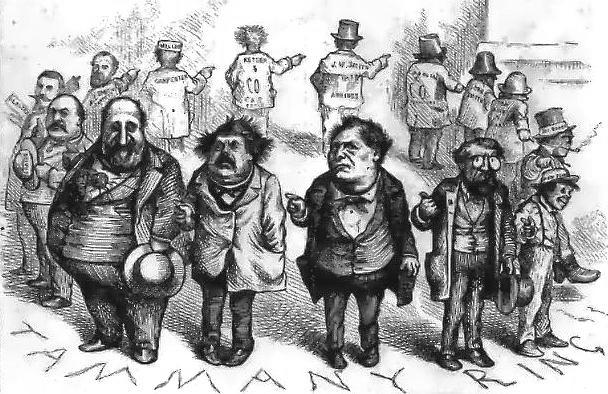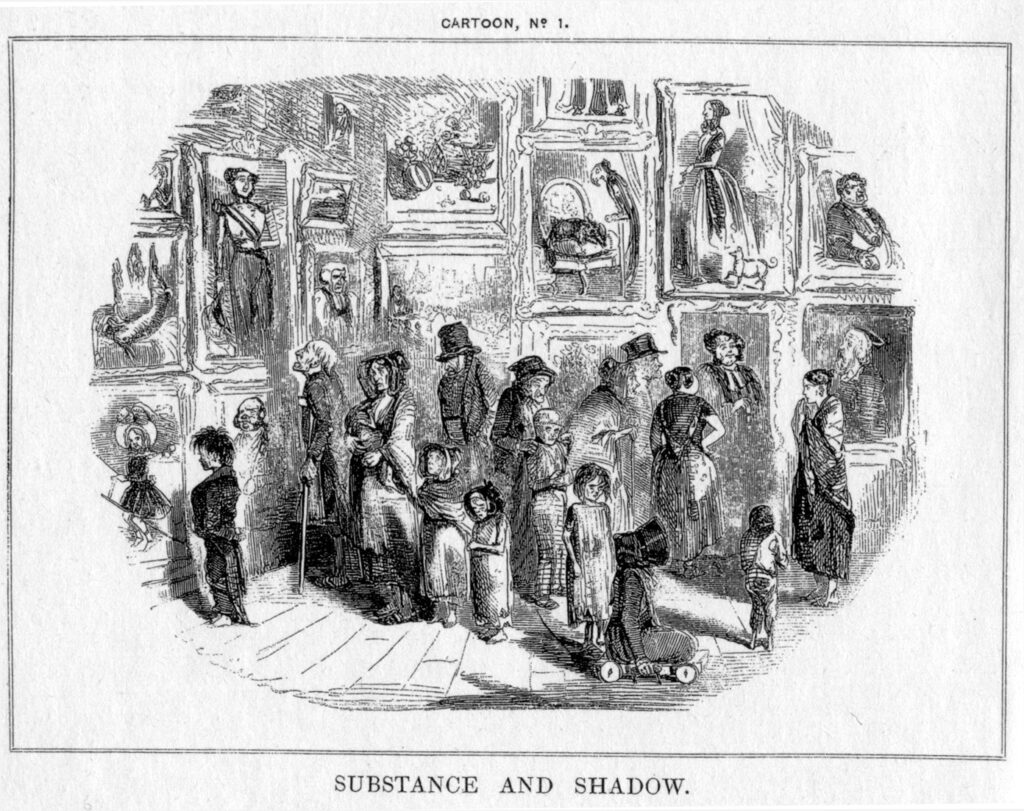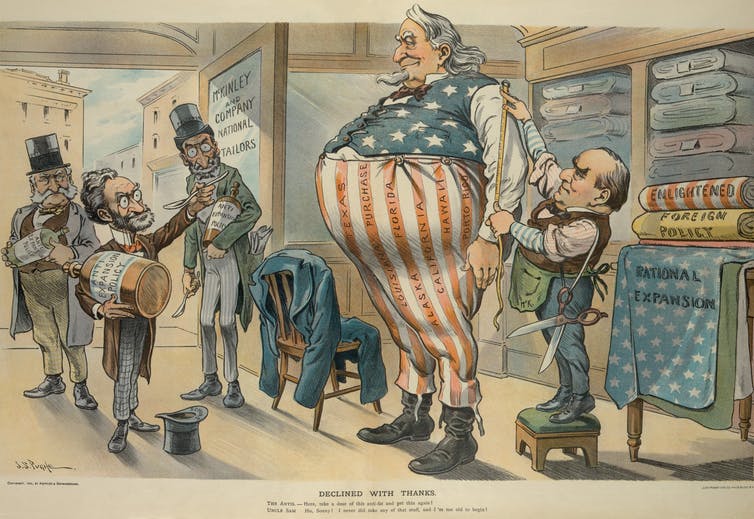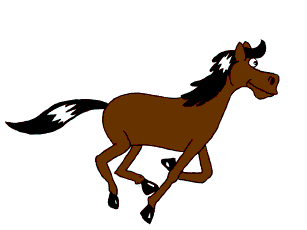History of Cartoon: a cartoon is a form of two-dimensional illustrated visual art. While the specific definition has changed over time, modern usage refers to a typically non-realistic or semi-realistic drawing or painting intended for satire, caricature, or humor, or to the artistic style of such works. An artist who creates cartoons is called a cartoonist.
The term originated in the Middle Ages and first described a preparatory drawing for a piece of art, such as a painting, fresco, tapestry, or stained-glass window. In the 19th century, it came to refer to humorous illustrations in magazines and newspapers, and in the early 20th century and onward it referred to comic strips and animated films.
Fine art
A cartoon (from the Italian “cartone” and Dutch word “karton”, meaning strong, heavy paper or pasteboard) is a full-size drawing made on sturdy paper as a study or modello for a painting, stained-glass or tapestry. Cartoons were typically used in the production of frescoes, to accurately link the component parts of the composition when painted on damp plaster over a series of days (giornate).
Such cartoons often have pinpricks along the outlines of the design; a bag of soot was then patted or “pounced” over the cartoon, held against the wall to leave black dots on the plaster (“pouncing”). Cartoons by painters, such as the Raphael Cartoons in London and examples by Leonardo da Vinci, are highly prized in their own right. Tapestry cartoons, usually coloured, were followed by eye by the weavers on the loom.

Print media
In modern print media, a cartoon is a piece of art, usually humorous in intent. This usage dates from 1843 when Punch magazine applied the term to satirical drawings in its pages, particularly sketches by John Leech. The first of these parodied the preparatory cartoons for grand historical frescoes in the then-new Palace of Westminster. The original title for these drawings was Mr. Punch’s face is the letter Q and the new title “cartoon” was intended to be ironic, a reference to the self-aggrandizing posturing of Westminster politicians.
Modern single-panel gag cartoons, found in magazines, generally consist of a single drawing with a typeset caption positioned beneath or (much less often) a speech balloon. Newspaper syndicates have also distributed single-panel gag cartoons by Mel Calman, Bill Holman, Gary Larson, George Lichty, Fred Neher, and others. Many consider New Yorker cartoonist Peter Arno the father of the modern gag cartoon (as did Arno himself). The roster of magazine gag cartoonists includes Charles Addams, Charles Barsotti and Chon Day.
History of Cartoon
Bill Hoest, Jerry Marcus and Virgil Partch began as a magazine gag cartoonist and moved on to do syndicated comic strips. Noteworthy in the area of newspaper cartoon illustration is Richard Thompson, who illustrated numerous feature articles in The Washington Post before creating his Cul de Sac comic strip. Sports sections of newspapers usually featured cartoons, sometimes including syndicated features such as Chester “Chet” Brown’s All in Sport.
Editorial cartoons are found almost exclusively in news publications and news websites. Although they also employ humor, they are more serious in tone, commonly using irony or satire. The art usually acts as a visual metaphor to illustrate a point of view on current social and/or political topics. Editorial cartoons often include speech balloons and, sometimes, multiple panels. Editorial cartoonists of note include Herblock, David Low, Jeff MacNelly, Mike Peters and Gerald Scarfe.
Comic strips, also known as “cartoon strips” in the United Kingdom, are found daily in newspapers worldwide and are usually a short series of cartoon illustrations in sequence. In the United States, they are not as commonly called “cartoons” themselves, but rather “comics” or “funnies”. Nonetheless, the creators of comic strips—as well as comic books and graphic novels—are usually referred to as “cartoonists”. Although humor is the most prevalent subject matter, adventure and drama are also represented in this medium. Noteworthy cartoonists of humor strips include Scott Adams, Steve Bell, Charles Schulz, E. C. Segar, Mort Walker, and Bill Watterson.

History of Political cartoons
History of CartoonBy the mid 19th century, major political newspapers in many countries featured cartoons commenting on the politics of the day. Thomas Nast in New York City brought realistic German drawing techniques to enliven American cartooning. His 160 cartoons relentlessly pursued the criminal character of the Tweed machine in New York City, and help bring it down. Indeed, Tweed was arrested in Spain, when police identified him from Nast’s cartoons. Sir John Tenniel was the toast of London.
Political cartoons can be humorous or satirical, sometimes with piercing effect. The target may complain, but he can seldom fight back. Lawsuits have been very rare.
The first successful lawsuit against the cartoonist in over a century in Britain came in 1921 when J.H. Thomas, the leader of the National Union of Railwaymen (NUR), initiated libel proceedings against the magazine of the British Communist Party. Thomas claimed defamation in the form of cartoons and words depicting the events of “Black Friday”—when he allegedly betrayed the locked-out Miners’ Federation. To Thomas, the framing of his image by the far left threatened to grievously degrade his character In the popular imagination. Soviet-inspired Communism was a new element in European politics, and cartoonists unrestrained by tradition tested the boundaries of libel law. Thomas won his lawsuit, and restore his reputation.

Scientific cartoons
Also in the world of science, mathematics, and technology, cartoons have found their place. One well-known cartoonist in the USA is Sidney Harris. Many of Gary Larson’s cartoons had a scientific flavor.
Books
Books with cartoons are usually reprints of newspaper cartoons. On some occasions, new gag cartoons have been created for book publication, as was the case with Think Small, a 1967 promotional book distributed as a giveaway by Volkswagen dealers. Bill Homestand’s other cartoonists of that decade drew cartoons showing Volkswagens, and these were published along with humorous automotive essays by such humorists as H. Allen Smith, Roger Price, and Jean Shepherd. The book’s design juxtaposed each cartoon alongside a photograph of the cartoon’s creator.
Animation

History of CartoonBecause of the stylistic similarities between comic strips and early animated movies, “cartoon” came to refer to animation, and the word “cartoon” is currently used to refer to both animated cartoons and gag cartoons. While “animation” designates any style of illustrated images seen in rapid succession to give the impression of movement, the word “cartoon” is most often used in reference to TV programs and short films for children featuring anthropomorphized animals, superheroes, the adventures of child protagonists and related genres.
History of CartoonAt the end of the 1980s, the word “cartoon” was shortened, and the word “toon” came into usage with the live-action/animated feature Who Framed Roger Rabbit (1988), followed two years later by the TV series Tiny Toon Adventures (1990).
FAQ about History of Cartoon
What was the first cartoon in history?
The first cartoon in history is considered to be "Fantasmagorie", a short animated film created by French cartoonist Émile Cohl in 1908. It is widely recognized as the first fully animated film and introduced many of the animation techniques that are still in use today. The film was made by drawing each frame by hand, with the resulting images photographed onto negative film, creating a moving picture when played back. "Fantasmagorie" was a major milestone in the history of animation and paved the way for the development of the medium as an art form and a means of entertainment.
Why is it called a cartoon?
The term "cartoon" originally referred to a preparatory drawing or sketch made by artists in the 1840s for frescoes, tapestries, and other decorative artworks. The term evolved to refer to comic drawings in the 1920s, when humorous illustrations were used in newspapers and magazines. These illustrations were often accompanied by short, funny captions and were used to entertain readers. As the popularity of these humorous illustrations grew, they began to be called "cartoons," and the term stuck, eventually becoming synonymous with animated entertainment in the form of television shows and movies. Therefore, the term "cartoon" originated from the word "cartone" which is Italian for "big paper."
Where is the origin of cartoon?
The origin of cartoon can be traced back to the Middle Ages, where caricatured images were used in satirical and humorous illustrations in manuscripts. However, the modern concept of cartoon as a form of entertainment and art emerged in the late 19th and early 20th century, primarily in newspapers and magazines. The development of animation technology in the early 20th century further popularized cartoons as a form of visual storytelling and entertainment, with iconic characters such as Mickey Mouse and Bugs Bunny becoming beloved pop culture icons.
When did cartoons originate?
Cartoons originated in the late 19th century, with the first animated cartoon, Fantasmagorie, being created by French animator Émile Cohl in 1908. However, the concept of using sequential drawings to create the illusion of motion can be traced back even further to the 19th-century inventions of the zoetrope and the flip book.










One Comment